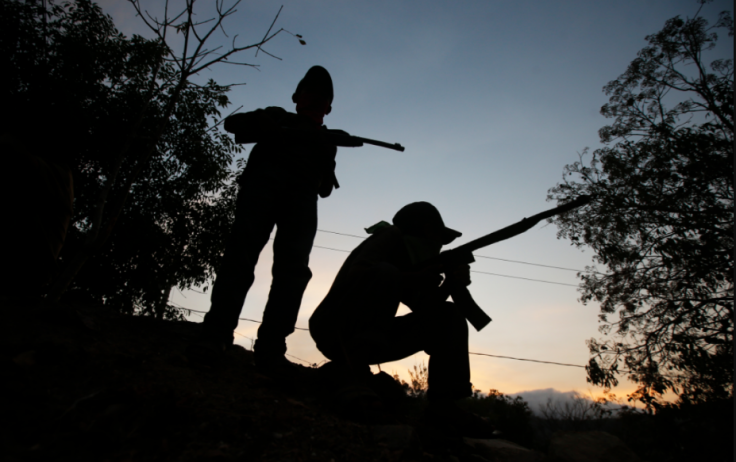
As the turf war between Los Chapitos and La Mayiza — the two most prominent factions of the Sinaloa Cartel fighting for control of the organization — nears its one-year mark in September, both groups are reportedly recruiting adolescents from other parts of Mexico and sending them to Sinaloa to fight on their behalf.
The conflict, which has claimed nearly 2,000 lives over the past 11 months, has driven both factions to adopt increasingly aggressive tactics and recruitment methods. From fake job postings to the direct targeting of individuals in rehabilitation centers, Los Chapitos and Los Mayos have allegedly turned to a new strategy: enlisting young people and using them as cannon fodder in Sinaloa.
This comes after authorities in Sinaloa found the bodies of two 16-year-olds inside a vehicle in Culiacán, following a shootout between the rival groups. According to reports, both teens were wearing camouflage-style clothing and tactical gear. They had reportedly been taken to Zacatecas for training before being deployed to Sinaloa. The discovery prompted officials to shed light on recruitment methods increasingly used by criminal organizations to exploit minors.
As Infobae México reported, Jalisco Attorney General Salvador González de los Santos said recently that criminal groups have been targeting adolescents from Jalisco and transporting them to other parts of the country for training.
"Some of the young people who have been released and were able to return have identified others who are still in Sinaloa and have been reported missing," González said. "What these criminal groups are doing is taking these youths or individuals and sending them to fight in the war against the other cartel in Sinaloa."
According to Jalisco authorities, the information came from testimonies of teenagers previously recruited by organized crime who also identified the possible locations of others reported missing in the state.
"The route we've identified shows that they are sent to Zacatecas, where they're trained at a specific location, then moved to Nayarit, and from there to Sinaloa," González added.
Authorities say the trend is far from isolated. Multiple cases have been documented in which cartels recruit minors across various states for training and eventual deployment. The regions most affected include Michoacán, Guerrero, Nayarit and Jalisco.
The use of minors by criminal organizations is not new. A report published earlier this year by the U.S. Bureau of International Labor Affairs estimated that nearly 30,000 children are currently involved in criminal groups in Mexico, and as many as 200,000 are considered vulnerable to recruitment.
That report, based on interviews with current and former child recruits and older operatives, described how minors are lured with promises of status, income and belonging.
A separate investigation by the Mexican government last year found that children as young as six have been recruited, with cartels increasingly turning to video games and social media to groom potential members.
The use of minors is not incidental. "These kids are disposable," said Gabriela Ruiz, a researcher at Mexico's National Autonomous University. Their age often shields them from harsh legal consequences, making them ideal recruits.
Some, like Sol, now 20, began killing at age 12. "I obeyed the boss blindly," she told Reuters. "I thought they loved me."
Many of these children, raised in violent, drug-ridden environments, are quickly groomed for roles ranging from lookouts to killers.
"You join with your death sentence already signed," said a 14-year-old child hitman interviewed by Reuters. "But it's worth it," he added, explaining that cartel life offered him food, purpose and a sense of family.
© 2025 Latin Times. All rights reserved. Do not reproduce without permission.







